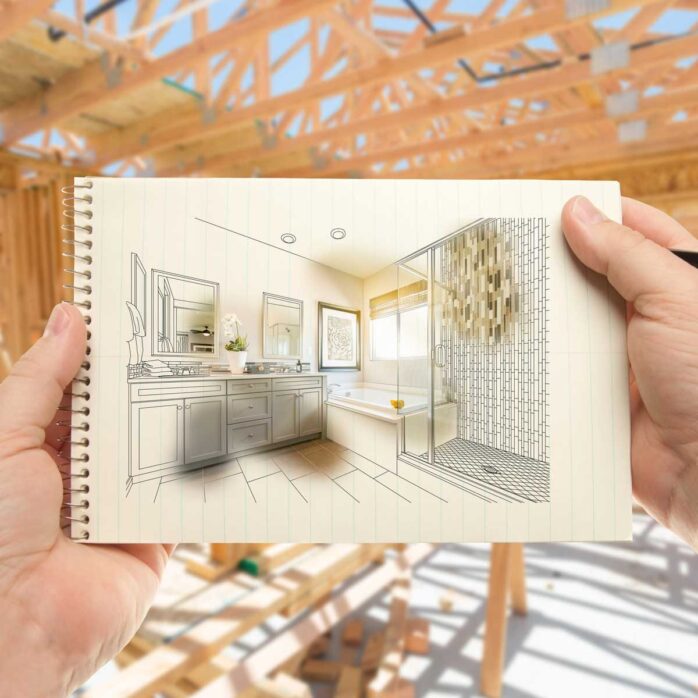
The easiest part of owning a home is deciding whether you’re going to build or buy a constructed one. After choosing the right option, the real struggle begins. Design changes, unexpected delays and costs, and budget misalignment are just a few of the issues home builders usually face.
Because these obstacles may seem daunting, you have to compute the final costs of building your home correctly. However, most site builders don’t have the exact number you’ll need to estimate the possible expenses. Therefore, you must partner with construction cost estimators, like BoutiqueHomePlans, to determine your building costs accurately.
While home-building poses many risks, it’s possible to prevent these unexpected setbacks by sticking to a new build budget. So, if you want to build your own home, this article is for you. We list down five smart ways to stick to your new build budget.

1. Track Subcategories Using Spreadsheets
One of the most challenging reasons home builders blow their budget is not creating an effective plan. While your home contractor can assist you in maximizing the numbers, the best way to avoid unnecessary costs is by educating yourself.
You can start by jotting down categories of the most significant home-building expenses. These costs include overhead and general expenses, finished lot costs, site work and foundation, and home framing. Next, use a spreadsheet to monitor the numerous subcategories for every priority expense category.
As you move along with the process, take some time to assess how you spent your money. Likewise, look at the main categories of spending to help you identify how these details can be joined together or divided into unique categories. This strategy will help you determine possible costs that slipped your mind and recognize the total price for each primary type.
These primary and minor categories are all beneficial in building your budget, which will help you stick to your budget. As it’s taxing to set up various types for your expenses, a home-building planner can do the work for you. A professional planner is valuable in setting up the right spending system by assisting the ongoing financial monitoring process.

2. Generate A Contingency Fund
While planning for the possible total expenses of your home is beneficial to help you oversee the costs, unexpected events may still happen. These may decrease your home-building productivity and are usually expensive. Therefore, you should prepare enough contingency funds to avoid borrowing additional debt in the future.
Here are several benefits of creating a contingency fund for your home:
- Gives peace of mind
- Acts as a cushion for unnecessary costs
- Becomes an emergency contribution in fulfilling your budget
- Covers the costs of possible job loss
- Shelters home repairs
Although planning for an emergency fund may seem costly initially, this strategy will help you achieve your home-building goals. Additionally, this plan will also shield you from losing your house and lot. Thus, you must invest in a contingency fund upon building your home.

3. Monitor Your Budget
Creating a budget is accessible in the beginning. However, if you don’t track your spending while building your home, your planned budget will be useless. Thus, you must continuously allot time to monitor your new build budget.
Here are some tips to follow to monitor your budget effectively:
- Organize Your Expenses: Identify your money-spending habits by gathering the inventory of your home-building costs. These costs may include those for labor, interior, and foundation.
- Jot Down The Costs On Your Expense Subcategories: After creating the major and minor categories, you can now list down the spendings you made in maintaining the home-building process. These spending should include fixed and variable expenses.
- Make Room For Changes: Allow room for changes or additional and unforeseen expenses while you monitor your home-building budget.
4. Focus On Your Priority List
If your budget becomes exceptionally tight, it’s time to assess your expense tracking list. Next, prioritize the most critical aspects of your future home. This method will help you understand which factors you don’t currently need and which parts demand your financial attention.
For example, if you’re from a big family and need more space for additional members, try focusing on the width of your home. This strategy will help you divert your focus from the finishes to adding another set of square footage after building the house. Moreover, upgrading your interior finishes can be quickly done in the future instead of expanding some parts of the house.
If you don’t have a problem with space and want more unique details in your home, focus your budget on the interior finishes rather than expanding the rooms. This method will prevent expensive renovations in the future. Indeed, focusing on your priority list can save you money in the long run.

5. Manage Your Overspending
While it’s possible to create a home-building budget plan, the truth is that not everybody can always stick to their allowances. This dilemma usually happens when the budget for a particular item is way too low. Therefore, you must assess which categories need more budget instead of purchasing the cheapest items.
If you worry about splurging on one category, the best way to counter this issue is by limiting another subcategory. For example, you can review your priority list to help you determine from which category-budget you can subtract. This method will help you stick to your overall budget as you build your dream home.
Always remember that you’re choosing to build a home to create a convenient lifestyle for your family. Therefore, it’s better to splurge on quality items instead of buying the cheapest options. While this article contains guidelines on how you can stick to your budget, you can still choose to splurge on some pricey features. For example, allowing yourself to upgrade necessary appliances or furnishings may help you estimate more budget-friendly items in not-too-important areas.
Doing a few splurges on personal items will make you feel more satisfied as you move into your new home. Thus, you can follow this method by making a conscious choice to increase your funds for select home items.

Key Takeaway
The budget may be a top concern for most future homeowners, yet it’s still possible to fulfill your dream of owning a home. An excellent way to make this dream happen is by planning your budget, splurging on the right items, and continuously monitoring your spending.
With the right home planner to help you organize your home budget, you can make that dream happen.












